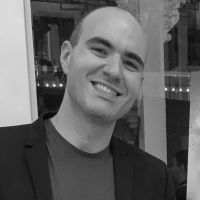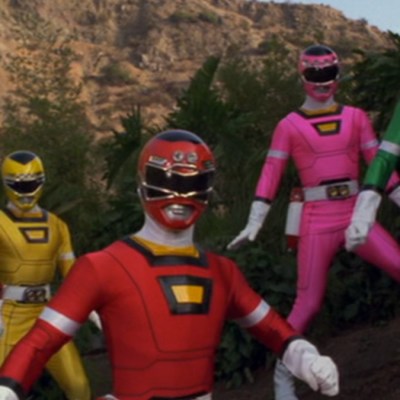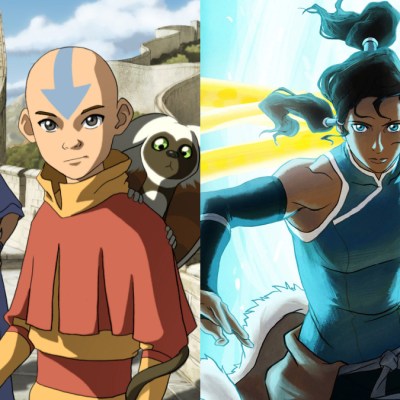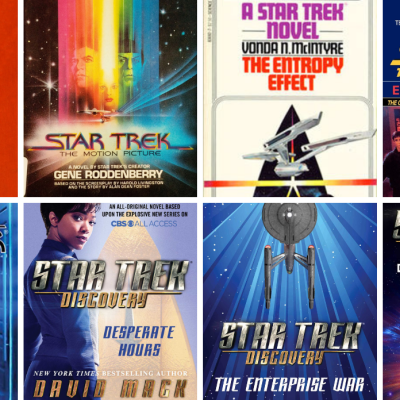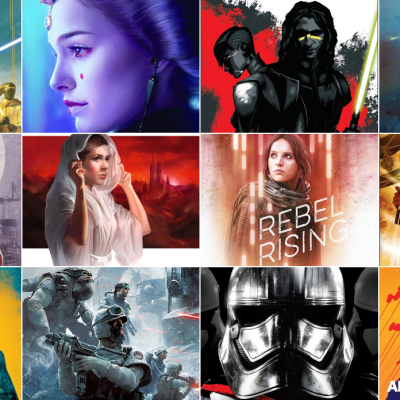Animorphs: The Challenges of Adapting the Books into Graphic Novels
Chris Grine was tasked with the impossible, bringing a well beloved book series to graphic novel form. We sat down with him to discuss his adaption process and the challenges to come.
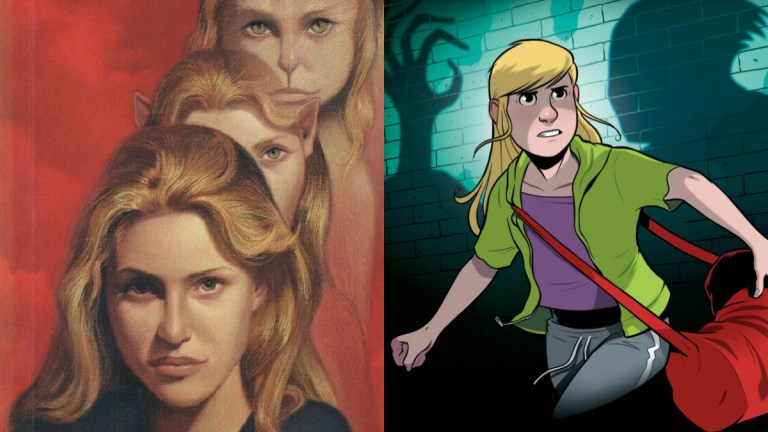
If you were alive in the ’90s, you know the name Animorphs. The sci-fi book series following the adventures of a group of kids who fight a race of invading aliens using the power to morph into animals has continued to has remained a pop culture mainstay even after it finished its run in 2001. It earned a fanbase the world over which to this day still discusses the series in detail. And for 20 years, fans have had their own images of the series in their heads, imagining what the epic battles and deep characters looked like beyond the page.
This made Chris Grine’s job exceptionally difficult.
An Eisner-nominated comic book author and illustrator, Grine was given the opportunity to adapt the much beloved books into multiple graphic novels and was met with a mountain of a challenges. How could he adapt the story without including the internal narration of the novels? Should the new covers match the iconic original covers? What’s the right way to draw an Andalite? And biggest of all, how would he handle the first Tobias focus book which has long stretches of the character, stuck in the body of a hawk, talking to himself?
We spoke with Grine after the second graphic novel was announced to discuss all these challenges and more.
DEN OF GEEK: One of the bigger elements I noticed about the graphic novel is the cover. The original book covers are very iconic. Now though the morph is on the top and the main image is one from the story. For the first graphic novel, you had the shot of the kids watching the spaceship crash. With book two, it’s Rachel unmorphed. What made Scholastic go with the decision to not completely focus the cover on the morphs?
CHRIS GRINE: That was a very long ongoing conversation between several of us there. I was pretty pro nostalgia on that. I thought we should definitely not stray too far from what the original covers look like. Even if that meant just fully illustrating the character morphing, or in similar stages like the original covers. But they ultimately decided that they didn’t want to necessarily be too beholden to that. Since this was a new generation of kids that are literally coming up with these books, they decided to go with what would be considered more of a traditional cover design nowadays. But we definitely kept the morph along the top, which I thought was a really good idea by the designer, Phil Falco, who was working closely with me.
I must’ve done like 30, 35 sketch ideas for the cover. We were back and forth for months trying to figure out what the trade dress was going to look like. It was the most important obviously for the first book, because that sets the tone for the entire series. We listened to just about everybody’s perspective and ideas. Everybody was allowed; anybody who had an idea could bring it to the table and we’d weigh it, discuss it. A lot of thought went into that cover.
One of the things that I really liked about the comic was that you drew the characters to really look like kids. Even though original books made it clear they were kids, the cover models on the old books always made me think they were older. Was it a conscious decision to go, “Okay, I’m going to make sure that these look like kids?”
Yeah, it was. I have two kids and my daughter is the oldest. She just turned 13, literally like a week ago. So I have a pretty good idea of where her head’s at. I see them playing with their friends and everything so I tried to keep that in mind.
So I didn’t want the (Animorphs) kids to look too old because they were supposed to be in middle school. It’s kind of ambiguous, but I know that they’re supposed to be like 12 to 13. It was important to me that I got that part right. The danger just felt way more real when the kids were younger.
The graphic novel is set in the ’90s, but it also does feel time agnostic in a way where, okay, it is in the nineties, but if you are a kid now, it doesn’t really take you out of it by making it a ’90s period piece. How do you tow this line?
Well, I think that was a conversation we definitely had. Is this going to be contemporary? Or are we going to try to set this in the ’90s? And I think right from the beginning, we were all pretty much unanimous that it should be set in the ’90s. If for no other reason then things like cellphones. Like, if all the kids had cellphones in Stranger Things, it would have been one episode.
But even though it’s the ’90s, it feels like it’s timeless to an extent like you said. Just removing so much technology from it kind of does that on its own. It works surprisingly well. I thought there was going to be a little bit more pushback maybe from fans who wanted it to be updated a little bit. I did remove some of the pop culture references that were in the books just because they were so specific. I still thought they were funny because I got them since I was getting ready to go to college in the late ’90s when these books came out. I was very much in the pop culture at that time. But nowadays, I mean, David Letterman references and things like that? No kid is going to know what that is. I didn’t want [kids] to be thrown out of the story because they weren’t getting the references.
That’s completely understandable. It reminds me of when they did the re-releases of the first few books back in the early 2010s where they tried to take out as many references as possible.
I definitely noticed that, too. I have the original versions of the books and then they sent me copies of the re-releases because I wanted to be able to write notes and highlight stuff and everything, and just kind of write right in there. They definitely took out a lot of the references. Some of them were updated and they felt like, I don’t know, a little too forced maybe. I think it would have been better if they had just left them more ambiguous, like, instead of being on The David Letterman Show, we could have been on a late night talk show or something.
When doing your research for the graphic novels, are you desperately flipping through to find every description for the series’ aliens to make sure they’re consistent? The first few books are a little shaky in terms of what everything looks like. There are also those posters they released later in the books run with pictures of all the aliens, too.
Yeah, I am. Especially for the first book, I took a lot of time to just do research. Even getting involved in some fan fiction type stuff and fan art. After 25 years, there’s still so much fan art coming out all the time. It’s pretty easy to see what fans’ ideas of what these characters look like. What has stuck along the way. So that was stuff that I really used to inform the way I designed everything. But then there was things like Seerowpedia.
The Animorphs wiki, yeah.
People have broken down every single book on there, like to a point where it’s ridiculous what they’ve done. But it’s so incredibly helpful for what I’m doing because there’s even sections on there that focus on inconsistencies and it has a list of things that were inconsistent from books before or books that came after. That was really good for me to see because it’s allowed me to fix a few things as we go.
Yeah, I noticed that even in the first volume, where you fixed one of the most famous inconsistencies with Jake thought speaking to Tobias even though he’s not morphed.
There were so many people who had pointed that out. Number one on the inconsistencies list on book one. That was really easy for me to fix. There was another thing with the descriptions of the aliens. One of those things that I found luckily in time was the way Andalites were described. So I had basically inked the whole book, right? I was fully in color mode and people on Twitter were like, “Well, which version of Andalites did you go with?” I had no idea what they were talking about.
I come to find out that there’s the version of the Andalite that looks a little bit more like a centaur with like a regular horseback. And then there’s the version that has more of an arch back that kind of goes from about mid back, up. It makes it hard for them to be ridden, because that was something that was talked about later but that’s not in book one.
So that was something that the fans actually pointed out, and maybe they don’t realize how much they helped me with that. It helped side step some people who maybe would have been upset that I didn’t do it right. Then if I had changed it later in the later books, then it would have been inconsistent on my end.
You’ve mentioned you’ve been contracted to do the first three books. Do you hope to do all 50-plus books if it came to that?
Oh my God. I would like to. My goal for now is just like, I would love it if I could just get the first 10 books. I mean, at some point, I’m 45 years old, so at some point, I can’t do all 54 books, right? I’d be in my 80s or 90s. I love what I’m doing. I feel so kind of blessed to be part of this fandom now and kind of accepted. I just really enjoy these books.
Normally, I’d do my own stories. I prefer that, but in this situation I’m really, really loving the interaction and the stories themselves. And the original authors, Katherine [Applegate] and Michael [Grant], have just been wonderful to work with. The few times I’ve gotten to hang out with them even virtually, it’s just been a pleasure.
So if I could get to like 10 books, that to me would be great. If I could get more than that, then that’s fine, too. But I think a nice round number like that would be pretty cool.
The first graphic novels are already pretty thick, but I’m just imagining how thick would a Megamorphs or an Andalite Chronicles comic be?
Oh my gosh. What I’ve noticed is once you get past about book seven or eight and maybe a little before, the page counts drop. They go down to about 170 pages or 160 some pages on average. And there’s a lot of filler. They started bringing ghost writers. There was just lots of scenes. There’d be entire chapters talking about, “Hey, remember that time when we met Visser Three at the construction site? Oh yeah. And you did this.” There’s so much of that stuff that I just skipped right over.
So the first book was 230 pages. My book, the graphic novel, and the second book clocked in at about 201 pages. I’m guessing that’s probably the sweet spot for most of them now. Probably somewhere between like 190, 200. It doesn’t feel too scary. When I start getting sub 200 pages, I start feeling a little better.
Right, and Scholastic doesn’t necessarily have to adapt every single book. I’m sure somebody out there will say, “No book 27 is my favorite book,” but not every book is critically important. To get the main plot points you could do… I’ll arbitrarily say at most two-thirds of the books.
Right. There’s even some books that I believe could probably just be adapted into one book because there’s so little actual connective tissue that you could have maybe two or three books combined in the one. But I don’t even know how we go about that because I assume you’d have to re-title the book. I don’t know. But yeah, there are options. Scholastic definitely has options. They could also do what they did with The Baby-Sitters Club and have multiple artists working on them.
I’ve had people say that about Animorphs and I’m instantly hurt. I shouldn’t be, but I’m like, “No, no more artists right now. Damn it. This is mine.” I love this. I don’t want to share just yet. I’m not at the point where I’m ready to share.
You’ve got to at least get through Ax’s first book, then you’ve covered all the main characters.
Yeah. And that’s what I’ve been saying. I’m going to be really disappointed if I don’t get to do books four and five. I’m going to be super disappointed.
Looking forward, you’ve found a lot of ways to get around the internal narration because that’s such a big part of the books. But coming up in book three you’ve got a Tobias book and he’s by himself a lot. How do you deal with long stretches where characters are just thinking?
Yeah, and I was thinking, that is going to be a terrible book. I had to figure out a way to make that interesting because I can’t just have a character constantly talking to themselves the whole book. He’s already doing thought speech to others, then internal thought speech to himself. I’m afraid it’s going to be confusing and it could get boring. I don’t want to lose the thread. So what I did visually, I grabbed a few panels from book one and two that I’d already finished up, just Tobias, whether he was on a branch or whatever when he’s a bird. I was just messing around with the panels themselves, trying to figure out, “Okay, how can I do this? Is there like a clever way I could pull this off simpler?”
I kind of figured it out, at least for now, and this could completely change, but I basically took the selection tool and I selected one half of the panel, kind of in a jagged selection. Then I went in and threw a color over that. So it would be almost like color grading on a movie or something. Just on half of it.
And so there could be a word in blue in the full color art, where maybe he’s talking to somebody or maybe he’s thinking something, but then in the same panel, but in the part that I had colored coded he’s almost having, not like split personality type of a thing, but having an internal conversation. I thought it might be a way of showing that he’s talking to himself. It seemed like it was working in the images that I did, but we’ll have to see. I’m still a little nervous about getting to book three because of that.
You made it work in the first graphic novel. You had the scene with Jake when he morphs into the lizard and you frame it as he’s telling the story to the other kids. So that works well there, it’s just getting to do that for a whole book. You can’t just have Tobias say, “Guys, I had a really rough morning. I was thinking some deep thoughts.”
And he’s had so many thoughts I don’t think he would even share with the other kids, right? About just his new reality and about maybe being slightly in love with that other Hawk or just having a personal crisis. That’s not something I’m going to be able to take care of just in dialogue alone. So I’m going to definitely have to figure that out.
This has been looming like a dark cloud over me since I started book one. Knowing that book three is very important to a lot of people and for a lot of really good reasons. I don’t want to mess that one up too badly, so I’m going to have to figure it out.
Stay tuned for the second part of this interview where Grine will break down his process for adapting a scene for the second graphic novel. The Visitor (Animorphs Graphic Novel #2) is now up for pre-order on Amazon.
